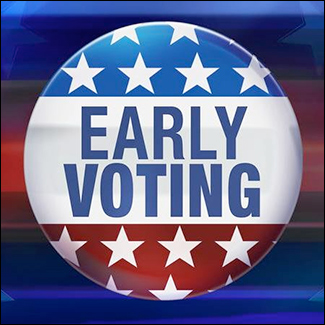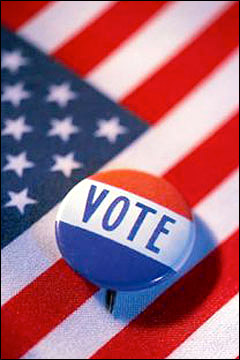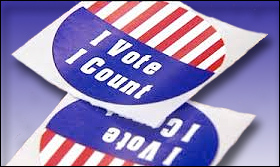By Jim Ellis — Monday, Nov. 6, 2023
President
Quinnipiac Poll: Kennedy Breaks 20 Percent Threshold — A new national Quinnipiac University survey (Oct. 26-30; 1,772 US Adults; 1,610 US registered voters; live interview) finds Robert F. Kennedy Jr., running as an Independent general election candidate, securing 22 percent support in a ballot test featuring him, President Joe Biden, and former President Donald Trump. The Kennedy presence dragged both President Biden (39 percent) and Mr. Trump (36 percent) below the 40 percent mark. Kennedy’s strongest groups were voters aged 18-34 (38 percent), Independents (36 percent), and Hispanics (33 percent).As has been the case with other polling, Kennedy draws slightly more support from the Trump/Republican coalition than he does from the Biden/Democratic voter group. In this particular survey, 14 percent of Republicans and 12 percent of Democrats support Kennedy.
House
NV-4: Governor Endorses Ex-North Las Vegas Mayor — Gov. Joe Lombardo (R) has already waded into the 4th Congressional District Republican primary to endorse former North Las Vegas Mayor John Lee, a Democrat turned Republican. Interestingly, Lee opposed Lombardo in the 2022 governor’s race, but fared poorly in garnering only eight percent support. Lombardo, then the Clark County Sheriff, would go on to defeat incumbent Gov. Steve Sisolak (D) in the associated general election to become the only challenger to unseat either a sitting governor or a senator in the entire country.
The 2024 4th District Republican primary winner will challenge Rep. Steven Horsford (D-Las Vegas) in what is likely to become a competitive race. The FiveThirtyEight data organization rates NV-4 as D+5. The Daily Kos Elections site ranks the district as the 34th most vulnerable seat in the 213-member Democratic Conference.
Governor
Morning Consult: Governor Approval Survey — The Morning Consult firm released their regular report measuring job approval scores of all 50 US governors and found everyone in positive territory. Govs. Phil Scott (R-VT; 83:14 percent approval/disapproval), Mark Gordon (R-WY; 73:13 percent), Chris Sununu (R-NH; 67:28 percent), Josh Green (D-HI; 66:25 percent), and Mike Dunleavy (R-AK; 63:25 percent) were the five governors commanding the strongest ratios.
The five with the worst ratings are: Govs. Tina Kotek (D-OR; 44:41 percent approval/ disapproval), Tate Reeves (R-MS; 46:44 percent), Katie Hobbs (D-AZ; 48:40 percent), Kim Reynolds (R-IA; 49:47 percent), and outgoing Gov. John Bel Edwards (D-LA; 49:43 percent). The poorer scores were particularly concerning for Mississippi Gov. Reeves, who is on the ballot for re-election Tuesday, Gov. Reynolds in Iowa who was consistently highly rated in previous surveys, and Gov. Edwards who will leave office in December but, heretofore, had enjoyed reliably positive scores.
States
Early Voting: Monitoring Trends Before Tuesday — Since most states have adopted some form of early voting, analyzing the pre-election vote has proven to be an accurate way to forecast momentum. Monitoring early voting becomes a reliable precursor to forecasting which party will do better when all ballots are counted. Unfortunately, for Tuesday’s election, Mississippi is one of the three states that has no early voting program. Kentucky only allows in-person early voting on the Thursday, Friday, and Saturday before the election so early trends are not available in those two states.
The Virginia numbers for the state’s legislative races are interesting. As reported through Nov. 2 from the Target Smart organization, Republican early voting is up three percentage points when compared to the party’s 2021 performance, while Democrats are down 2.7 percent under the same model. Unaffiliated voters are down 0.4 percent from their 2021 performance statistics. Democrats, however, still have more people casting their ballots than do Republicans and unaffiliated voters (52.2 percent of early ballots come from Democrats, 32.7 percent from Republicans, and 15.0 percent from the unaffiliated segment).
The Virginia Public Access Project also charts the pre-election voting. In addition to the early vote by party, they also track the early in-person vote. Here, Republicans have clear momentum for the Tuesday legislative elections. Compared to the 2021 turnout (numbers are recorded in 2021 and 2023 at the 16-day before election mark), Republican early in-person turnout is up 7.4 percentage points, while Democratic early in-person participation is down 6.3 points. Again, however, more Democrats than Republicans have voted, but the comparison within each party’s previous performance has routinely proven significant.







